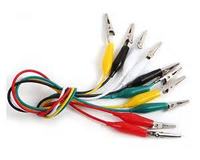Sweetestbaboon
Newbie level 3
Hello wonderful electronic folks,
I'm a achoolteacher who was recently gifted a Realistic Color Organ. It's a really cool thing but alas & alack, it lights up but doesn't respond to sound at all (the lights are supposed to change with the music).
I saw this years-old thread & thought someone might be able to help a desperate schoolteacher!
The old thread is here, in case this helps to solve the problem:
https://www.edaboard.com/threads/254290/
I opened mine up & comparing my board to the one in the old thread, even to this layman, the problem seems obvious- the silver piece that modilates the the lights is simply missing. Here's a pic of my board:

Can I get this part anywhere? Perchance do any of you much more experienced folks have an extra piece like this lying around you'd be willing to send to a deserving schoolteacher?
Even if I get the part, is it as easy as just putting in place? Is there somewhere or someone near me (I'm in Princeton Jct., NJ) that maybe could help?
Please help if you can. I know the kids would really dig this the most if I can really get it to work.
Thanks very very much for your time & consideration.
Enjoy the day,
Robt
I'm a achoolteacher who was recently gifted a Realistic Color Organ. It's a really cool thing but alas & alack, it lights up but doesn't respond to sound at all (the lights are supposed to change with the music).
I saw this years-old thread & thought someone might be able to help a desperate schoolteacher!
The old thread is here, in case this helps to solve the problem:
https://www.edaboard.com/threads/254290/
I opened mine up & comparing my board to the one in the old thread, even to this layman, the problem seems obvious- the silver piece that modilates the the lights is simply missing. Here's a pic of my board:

Can I get this part anywhere? Perchance do any of you much more experienced folks have an extra piece like this lying around you'd be willing to send to a deserving schoolteacher?
Even if I get the part, is it as easy as just putting in place? Is there somewhere or someone near me (I'm in Princeton Jct., NJ) that maybe could help?
Please help if you can. I know the kids would really dig this the most if I can really get it to work.
Thanks very very much for your time & consideration.
Enjoy the day,
Robt
